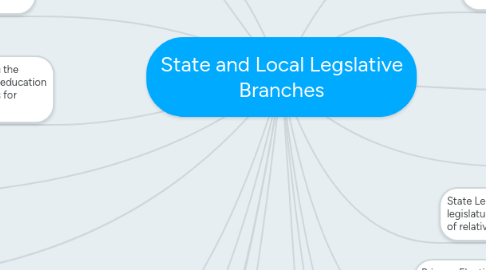State and Local Legslative Branches
作者:Emily Rensi

1. Government Structure and Lawmaking: The United States has four common types of local government: counties, townships, municipalities, and special districts, plus tribal governments that enact laws for their Native American populations.
2. Cities and Municipalities: States decide what is called a city and what is called a municipality. In most cases, cities have a certain size population and geographic area.
3. Townships exist as units of local government in 20 states—mostly in New England and the Midwest
4. Special Districts: From time to time, local governments establish special districts that are better able to respond to specific problems than a more general unit of local government
5. School Districts: Local school districts are usually governed by an elected local body, the school board
6. Public Policy Concerns of State Legislatures: State and local governments enact laws that specify public policy in many areas, including business regulation, controlling and regulating natural resources, protecting individual rights, and implementing health, education, and public welfare programs
7. Voting Laws: Many states have moved to add more stringent requirements related to voting. Citing the problem of voter fraud, lawmakers in these states have introduced a range of measures designed to prevent unauthorized people from voting.
8. Environment: In many ways, states have taken the lead on legislating about environmental use and protection.
9. Education: States continue to wrestle with the challenge of making sure that schools and education programs are providing the best outcomes for students.
10. Public Safety and Corrections: Protecting public safety has always been a major goal of state and local governments.
11. Transportation and Mass Transit: Some cities, like Los Angeles, are famous for their traffic jams. In Washington, D.C., each person who drives a car to work wastes an average of 67 hours per year in traffic jams. Traffic problems also affect air quality and result in inefficient use of resources
12. Economic Development:State and local governments are typically quite concerned about the health of their community’s economy.
13. State Legislative Powers and Structure. State legislatures derive their powers from the state constitution. Legislatures are empowered to pass laws for the state about almost any topic
14. Organization of Legislature. State legislatures are known by various names and come in many sizes, but most are organized like Congress.
15. Legislative Sessions . There are two types of legislative sessions: regular and special
16. Qualifications: The legal qualifications for state legislators are defined in a state’s constitution
17. State Legislative Elections.Members of the state legislature are elected from legislative districts of relatively equal population.
18. Primary Elections. All state senators and representatives are directly elected by the people in their voting districts
19. Campaign Finance: Some candidates for state legislatures spend millions of dollars trying to get elected, while others spend very little
20. Civic Participation in Local Government: Americans have relatively more power and influence at the local level of government than at any other level, and there are many avenues for citizens to participate in the political process.


